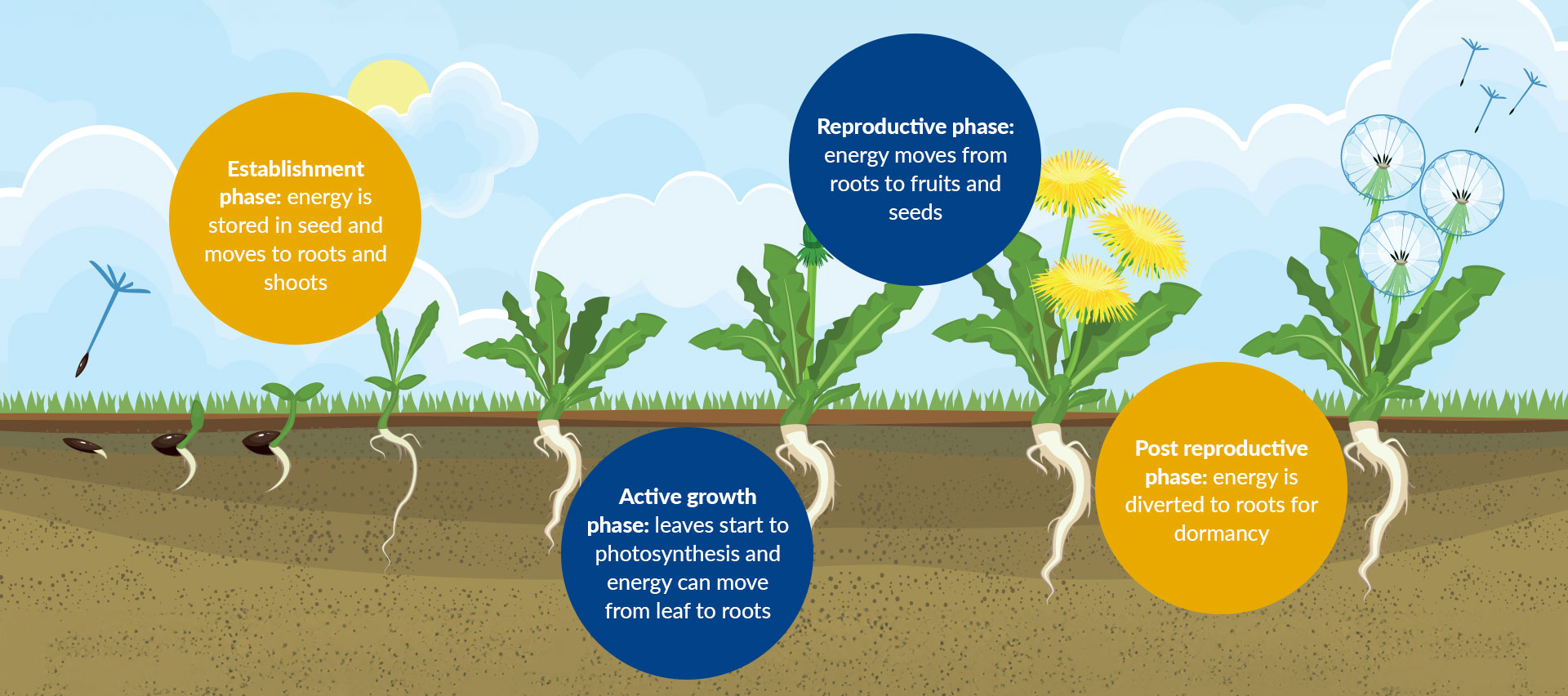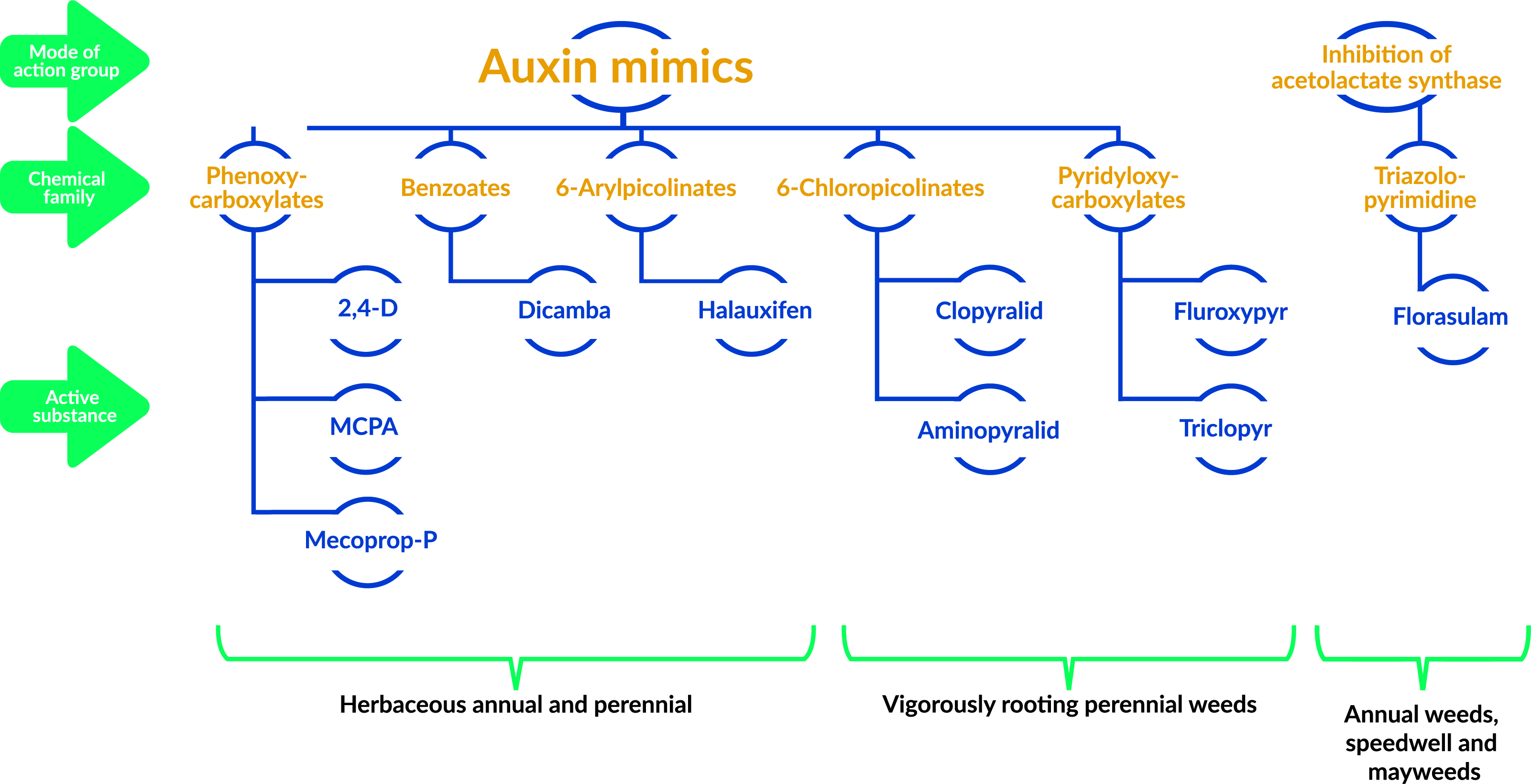There are few turf surfaces that have the fortune of remaining weed free throughout their useful life. Whether it is grasses or broadleaved weeds, annuals or perennials, at some point there is likely to be a requirement for some degree of weed control to ensure that the surface remains attractive, functioning, and safe.
The best weed management is to avoid their presence in the first place by understanding what factors will provide opportunities for weed establishment. For example, the Park Grass experiment (Silvertown et al. 2006) demonstrated a reduction in plant species from 45 species down to just two by consistently fertilising grassland, resulting in a reduction in broadleaved weeds and an increase in grass biomass. Even when followed to its fullest extent, however, opportunities for weeds to establish will still occur which may need further intervention through the use of systemic herbicides.
The systemic herbicides that are used on turfgrass surfaces must be selective so that the weed species are controlled without injuring the turfgrasses. For grass weeds there are few options. Since the withdrawal of pinoxaden; Cycloxydim, the active substance in Laser is the only herbicide that will control certain grasses within a sward. Cultural controls such as manipulating soil pH, available nutrition, and water are therefore key to grass weed free turf.
When turf surfaces are affected by broadleaved weeds there are a greater number of options for herbicidal control. To get the most out of herbicides, applications should coincide with the downwards movement of sugars (energy) so that all parts of the plant, including the roots are controlled. This downwards movement occurs when the plant is in the active growth phase and, if it is a perennial plant, in the post reproductive phase. Because annuals only survive for one growing season, there is no point in applying herbicide once they have moved into the reproductive phase.
 Figure 1 Systemic herbicides should be applied when plants will be moving energy towards the roots, either in the active growth phase or in the post reproductive phase.
Figure 1 Systemic herbicides should be applied when plants will be moving energy towards the roots, either in the active growth phase or in the post reproductive phase.
Alongside timing herbicide application correctly, selecting the right active substances for the species that are present will ensure effective weed control. Whilst there are several active substances that are authorised under the two turfgrass definitions, managed amenity turf and amenity grassland, they all belong to just two mode of action groups. The mode of action describes the specific processes that are affected in the target plant and should be alternated to ensure that herbicides continue to be effective against target weeds. If it is not possible to alternate the mode of action, the next best option would be to alternate chemical families and finally to alternate active substances.
 Figure 2 The main selective herbicides for control of broadleaved weeds in amenity grassland and managed amenity turf. To maintain efficacy of herbicides and reduce the risk of resistance the mode of action group should be alternated.
Figure 2 The main selective herbicides for control of broadleaved weeds in amenity grassland and managed amenity turf. To maintain efficacy of herbicides and reduce the risk of resistance the mode of action group should be alternated.
Auxin mimic herbicides all work by oversupplying the target plant with a synthetic version of the growth hormone auxin. The plant becomes unable to control growth leading to the characteristic twisting following application. High levels of free radicals are produced causing cell damage that the plant cannot defend itself against because energy generation through photosynthesis has also stopped. Ultimately the plant starves to death.
Auxin mimic herbicides in the phenoxy-carboxylate and benzoate chemical families are effective against a range of broadleaved weeds. As a rough rule 2,4-D will provide better control of weeds with a tap root, whilst dicamba is effective against weeds with a spreading habit. The 6-Chloropicolinates and pyridiloxy-carboxylates provide better control of vigorously growing perennial weeds and of woody weeds. Clopyralid and aminopyralid are particularly useful for weeds with a tap root because they are well translocated. Fluroxypyr is less well translocated but is useful for controlling problem weeds like speedwell and chickweed. Triclopyr can be used against woody weeds.
Florasulam is the only active substance in the acetolactate synthase inhibitors (ALS inhibitors) group authorised for turfgrass. ALS inhibitors work by preventing the production of specific amino acids. The resulting symptoms are slow to develop and more pronounced on leaves that emerge after treatment. Symptoms include chlorosis, vein discolouration, necrosis, reduction in growth and gradual death. Florasulam is effective at low concentrations and provides good control of annual weeds, speedwell, and mayweed. It is the only rotation option for breaking the cycle of using auxin mimics to control weeds in turf.
Identification of the weed species that are present will help with both timing of application and with product selection to ensure that herbicide use is effective. Where multiple species are present, they may need to be targeted with herbicides containing more than one active substance or by tank mixing multiple products with different active substances to increase the spectrum of weeds that are controlled. For more information, speak to your local Agrovista Amenity specialist.
Author: Abigail Graceson, Technical Manager,
Agrovista Amenity

